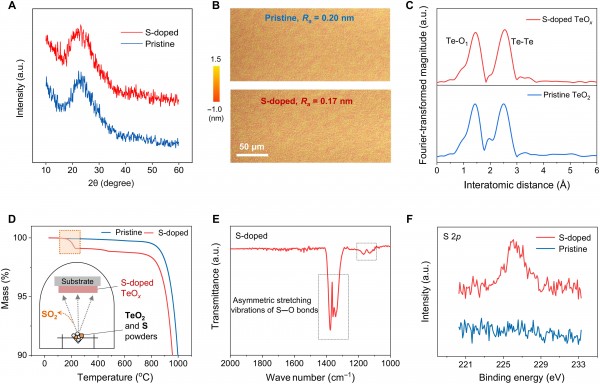Sulfur redox mediator for low-temperature flexible amorphous oxide CMOS electronics
- 저자
- Mingyang Wang, Taoyu Zou, Youjin Reo, Yong-Sung Kim, Min Gyu Kim, Minwoo Choi, Yongyoung Park, Kiyeon Yang, Youngjae Kang, Huihui Zhu*, Yong-Young Noh*, Ao Liu*
- 저널명
- Science Advances 11, 43 (2025)
- 년도
- 2025
- Link
- https://www.science.org/doi/10.1126/sciadv.adz6914 166회 연결
[Abstract]
Amorphous p-type oxides are essential for next-generation flexible and scalable complementary metal-oxidesemiconductor (CMOS) technologies. Among emerging candidates, tellurium-based oxides (Te-TeOx) show greatpromise due to their unique Te-Te conduction networks embedded within the amorphous TeO 2 matrix. However,controlled formation of these conduction channels remains challenging, limiting both hole transport and dopa-bility under low thermal budgets. Here, we report a sulfur-mediated redox strategy that modulates the localbonding environment via TeO2 dissociation and partial Te 4+ reduction, promoting formation of short-chain Te-Tenetworks. This enables high-performance p-channel thin-film transistors processed at an ultralow temperature of120°C, exhibiting an average hole mobility of 11.5 cm 2 V−1 s−1 and on/off current ratios around 106 with high uni-formity and reproducibility. Integration with n-type counterparts enables all-oxide CMOS circuits on both flexibleand rigid substrates, including inverters with gain up to 1694, ring oscillators operating at 339 kHz, and large-scale functional circuits with rail-to-rail output.
